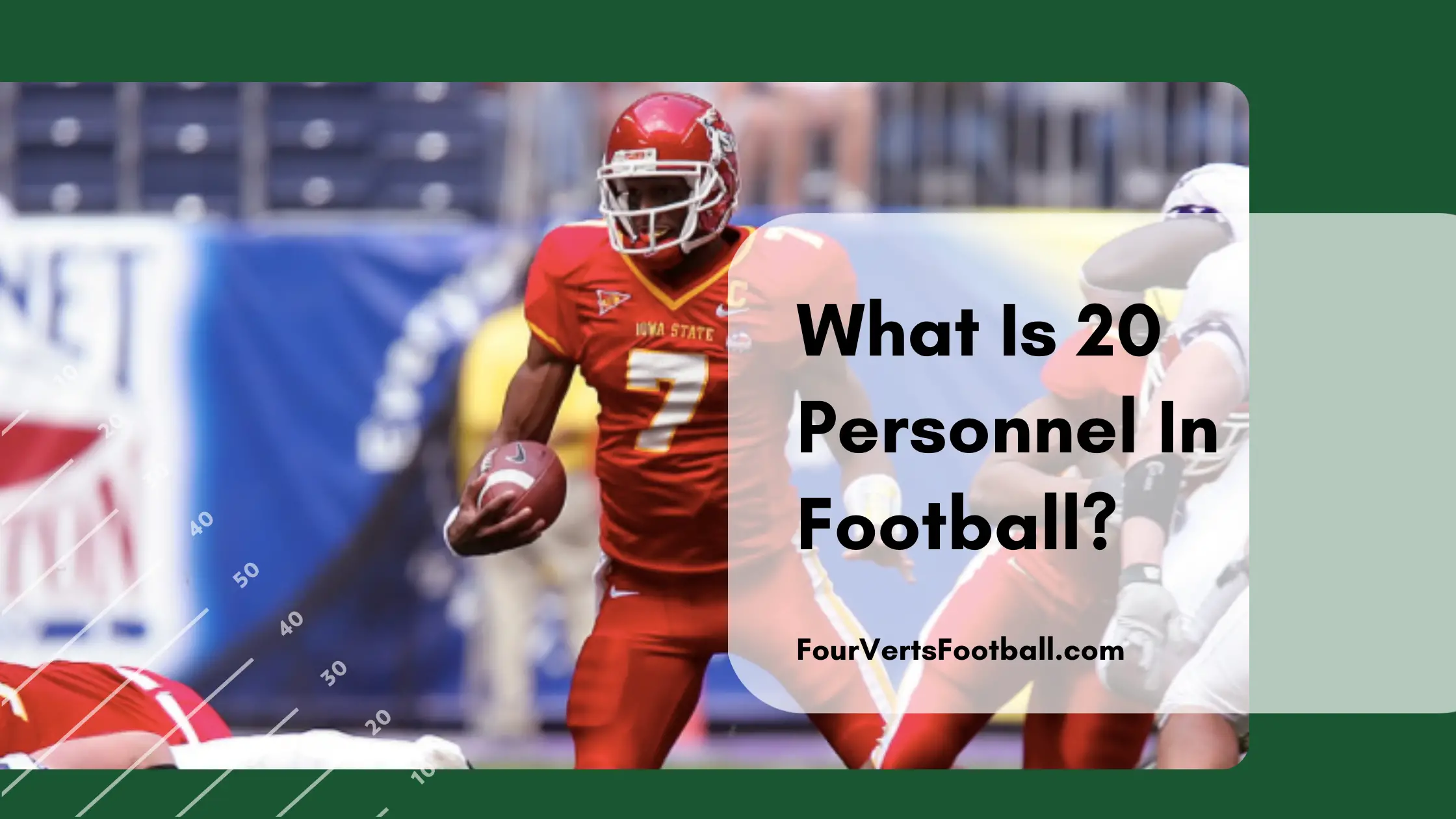The term 20 personnel in football refers to an offensive grouping that includes two running back zero tight ends and three receivers. The 20 personnel package allows the offense to run the ball effectively off-tackle while also giving the quarterback plenty of passing outlets.
When it comes to personnel groupings in football understanding them is actually quite straightforward.
You may have noticed that all personnel groupings will include a two-digit number in front of them. This two-digit number is actually explaining how many players at each position are going to be on the field.
For example, in twenty personnel we know there are going to be two running backs and zero tight ends. We know this because the first digit in a personnel grouping displays the number of running backs on the field.
We know there are zero tight ends because the second digit displays the number of tight ends on the field.
Furthermore, you can use this personnel number to determine the rest of the players on the field as well. The vast majority of offensive groupings include one quarterback and five offensive linemen.
This means that six of the eleven offensive positions are already spoken for. Next, you use the personnel number to add up the tight ends and running backs. In 20 personnel this is two running backs and zero tight ends.
This brings the total of players in this grouping up to eight of the eleven starters. The only position left at this point is wide receiver. If we know the other positions are spoken for this means that there are three receivers in this grouping.
Adding these three receivers to the grouping will give us a total of eleven players.
Benefits Of 20 Personnel In Football
Good Mix Of Passing And Rushing Threats
One benefit of using 20 personnel in football is that it offers the offense options to pass or throw. When it comes to passing the offense is going to have five capable receiving threats.
The three receivers give the team plenty of options downfield, while today’s running backs tend to be great pass catchers as well. If necessary one of the running backs can stay in the pocket for pass protection in order to give the quarterback more time.
When running the football in this formation a team can move the ball effectively. In this personnel grouping, teams will often use one of the running backs as a lead blocker or extra lineman.
Most running backs are capable blockers due to their practice in pass protection. Additionally having two runningbacks means teams will have to key in on both players to determine who is getting the ball.
Potential Mistmatches
Another benefit of using 20 personnel is the potential mismatches it creates in the passing game. A mismatch occurs when a defensive player attempts to cover a player noticeably better than them.
One common mismatch in football is running back versus linebacker. Since two running backs are going to be on the field it is likely one of them is going to get a favourable matchup with a linebacker.
Running backs tend to be noticeably faster than linebackers especially when they make their way down the field. This presents plenty of opportunities for the offense to take advantage of the slower linebackers looking to cover the running backs.
Throwing Against A Stacked Box
When running 20 personnel the offense will find that the defense will often react with a stacked box. A stacked box refers to a situation in which the defense puts extra players closer to the line of scrimmage in order to stop the run.
When this happens the safeties are usually closer to the line of scrimmage making it harder for them to help out on deep routes.
Since there are still three receivers on the field this means the offense may have a chance to generate more one on one matchups against the cornerbacks.

